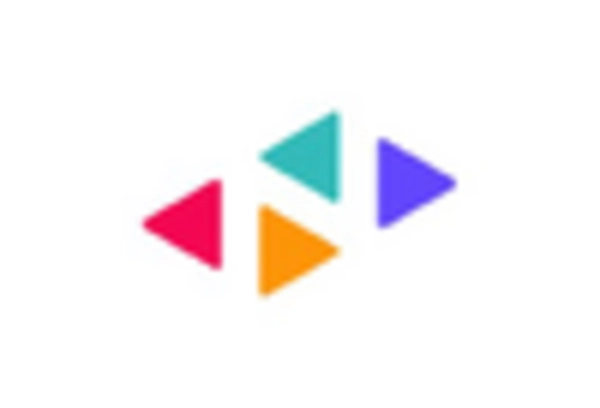Growing Adoption of Wearable Technology
The Player Tracking System Market is experiencing a growing adoption of wearable technology among athletes and teams. Wearable devices, such as smartwatches and fitness trackers, are increasingly being integrated with player tracking systems to provide comprehensive data on player performance and health metrics. This trend is indicative of a broader movement towards personalized training regimens and performance optimization. Market analysis suggests that the wearable technology segment within the player tracking systems is expected to expand significantly, driven by advancements in sensor technology and data analytics. As athletes seek to enhance their performance, the demand for integrated tracking solutions that combine wearables with traditional tracking systems is likely to rise.
Increased Investment in Sports Analytics
The Player Tracking System Market is benefiting from increased investment in sports analytics, as teams recognize the value of data in shaping strategies and improving performance. Organizations are allocating substantial resources towards analytics departments, which utilize player tracking systems to derive actionable insights. This trend is reflected in the growing number of startups and established companies focusing on sports analytics solutions. Recent statistics indicate that the sports analytics market is projected to reach several billion dollars in the coming years, highlighting the financial commitment to data-driven approaches in sports. This investment not only enhances team performance but also elevates the overall quality of the Player Tracking System Market.
Increased Focus on Player Health and Safety
In the Player Tracking System Market, there is a notable shift towards prioritizing player health and safety. Teams and organizations are increasingly utilizing tracking systems to monitor player movements and physiological responses during training and games. This focus is not only about performance enhancement but also about preventing injuries and ensuring long-term athlete well-being. Data indicates that injuries can lead to significant financial losses for teams, making the investment in player tracking systems a strategic decision. By leveraging these systems, teams can analyze patterns that may indicate potential injury risks, thereby fostering a safer playing environment. This trend is likely to continue as awareness of player health issues grows.
Enhanced Fan Engagement through Data Insights
The Player Tracking System Market is also witnessing a transformation in fan engagement strategies, driven by the insights generated from player tracking data. Teams are increasingly sharing performance metrics and player statistics with fans, creating a more interactive and immersive experience. This data-driven approach not only enhances the viewing experience but also fosters a deeper connection between fans and players. As per industry reports, franchises that effectively utilize player tracking data for fan engagement have seen a rise in attendance and merchandise sales. This trend suggests that the integration of player tracking systems is not just beneficial for teams but also for cultivating a loyal fan base, which is essential for long-term success.
Technological Advancements in Player Tracking Systems
The Player Tracking System Market is experiencing a surge in technological advancements, which are pivotal in enhancing the accuracy and efficiency of player performance analysis. Innovations such as artificial intelligence and machine learning are being integrated into these systems, allowing for real-time data processing and analysis. This technological evolution is not merely a trend; it is a necessity for teams aiming to gain a competitive edge. According to recent data, the market for player tracking systems is projected to grow at a compound annual growth rate of approximately 20% over the next five years. This growth is largely driven by the increasing demand for data-driven decision-making in sports management, which underscores the importance of sophisticated tracking technologies.
















Leave a Comment